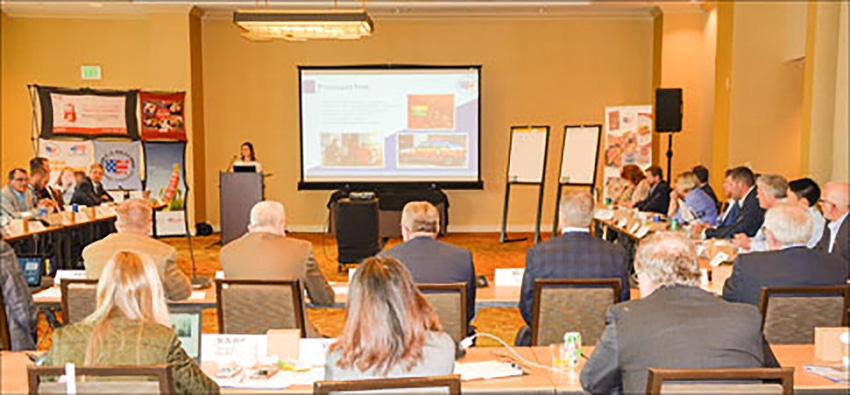More important than ever to diversify destinations for U.S. red meat
African swine fever was a major focus of the pork workshop, due to its potential impact on global pork production and trade patterns.
April 8, 2019

African swine fever and trade ostacles were top discussion items during the U.S. Meat Export Federation’s recent workshops on its global marketing priorities. Later this spring, the USMEF will submit its Unified Export Strategy to the USDA Foreign Agricultural Service, outlining its proposed utilization of USDA Market Access Program and Foreign Market Development Program funds in Fiscal Year 2020. The feedback collected at these annual workshops helps guide the USMEF’s preparation of the UES.
USMEF Chair Conley Nelson, Chair-Elect Cevin Jones, Vice Chair Pat Binger and Secretary-Treasurer Mark Swanson took part in both workshops. Nelson says industry participants make valuable contributions to USMEF’s planning process.
“One of the unique attributes of USMEF is that it includes so many sectors from across U.S. agriculture, and many are represented at these UES workshops,” Nelson says. “We’re able to discuss trade issues and priorities from the perspective of the livestock producer, the exporter, the packer and even from the feedgrain and oilseed producer. Getting all of these people engaged in this discussion allows USMEF to put together the best possible UES proposal.”
Also participating in the workshops was Tosha Clark, agricultural marketing specialist with the USDA-FAS Office of Trade Programs. Clark explained the UES process and emphasized the importance of developing and submitting a detailed, well-constructed plan. She also offered a status report on the USDA Agricultural Trade Promotion Program, a key component of the Trump administration’s trade mitigation package designed to address the effects of retaliatory measures and other trade barriers impacting U.S. agricultural exports.
These retaliatory measures and other trade obstacles were an important topic of discussion at the UES workshops, as USMEF staff presented detailed updates on marketing activities and market conditions in key destinations for U.S. pork and beef, including both well-established and emerging markets.
ASF was also a major focus of the pork workshop, due to its potential impact on global pork production and trade patterns. National Pork Board CEO Bill Even and National Pork Producers Council CEO Neil Dierks briefed participants on efforts by the U.S. pork industry and USDA to educate producers about ASF and prevent its entry into the United States.
“The times we are in right now — with ongoing trade disputes, new trade agreements that have either taken effect or are still being developed and ASF impacting pork trade — really add to the complexity of this process,” Nelson says. “It’s more important than ever to diversify our international destinations for U.S. red meat, yet we need to protect U.S. market share in some of the mainstay markets where we face new challenges and our competitors have gained an advantage. It’s a fine line to walk, and getting perspectives from across the industry is extremely helpful.”
More information on the FY 2020 UES will be presented at the USMEF Spring Conference, May 22-24 in Kansas City. USMEF standing committee meetings, where the UES will be discussed in detail, are set for May 23.
Source: U.S. Meat Export Federation, which is solely responsible for the information provided, and wholly owns the information. Informa Business Media and all its subsidiaries are not responsible for any of the content contained in this information asset.
You May Also Like



